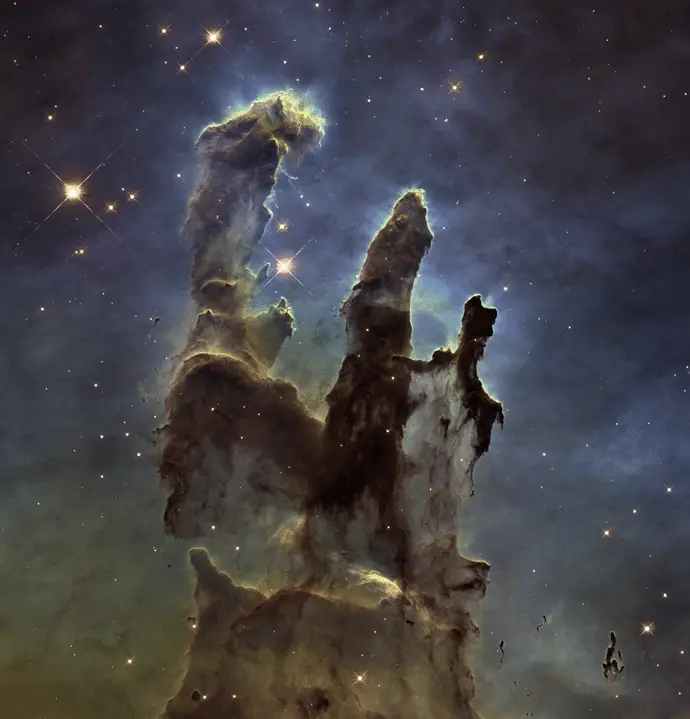NASA has just released a new three-dimensional visualization of the Pillars of Creation, located at the heart of the Eagle Nebula. This video, the most detailed ever made, takes us on a journey through this majestic celestial structure, revealing its celestial dreams in different wavelengths of light.
For decades, the glittering towers of cosmic dust and gas have inspired wonder and amazement, ever since the first image was captured by the Hubble telescope. Now, thanks to data collected by the Hubble and Webb telescopes, astrophysicists at the NASA They have created an unprecedented visual experience, allowing us to explore the three-dimensional structure of the Pillars of Creation and admire the dust clouds and hidden stars that form its distinctive features.
This new visualization of the Pillars of Creation is based on observational data from a paper published in the journal Meteoritic & Planetary Science
The 2.5-minute video allows viewers to experience the Pillars of Creation in both visible light, as captured by Hubble, and infrared light, as captured by Webb.
Frank Summers, principal visualization scientist for NASA’s Universe of Learning team, explained:
“By flying between and through the columns, viewers experience the three-dimensional structure and see how different it appears in Hubble’s visible-light view compared to Webb’s infrared-light view.”
The Hubble telescope observes objects that shine in visible light at higher temperatures, while Webb’s infrared vision is sensitive to objects that are cold. This allows Webb to penetrate through the dust dark to see the stars hidden in the columns. Hubble sees columns with dark brown dust and bright yellow ionized gas on a blue-green background, while Webb’s image features almost transparent orange and light brown dust with light blue ionized gas on a dark blue background.
There visualization It also highlights different stages of star formation. At the top of the central column, an infant protostar can be seen embedded glowing deep red in infrared light. Then, a diagonal jet of material ejected from a newborn star is visible near the top of the left column, indicating that a new star has been born stareven if we can’t see it directly.

THE Pillars of Creation extend for about 4-5 light-years, a relatively small feature of the vast Eagle Nebula, which extends for 70×55 light-years. nebula It is located 7,000 light years away from Earth in the constellation of Serpens, but it is so bright that it can be seen with a small telescope. Its columns, meanwhile, have become famous for the first time Thank you at Hubble in 1995 with a breathtaking debut that remains one of the most iconic astronomical images of all time.
Mark Clampin, director of NASA’s Astrophysics Division, said: “When we combine observations from NASA’s space telescopes across different wavelengths of light, we expand our understanding of the universe.”
And you, what do you think of this new visualization of the Pillars of Creation? Share your thoughts in the comments!
#Pillars #Creation #NASA #Releases #Visualization
